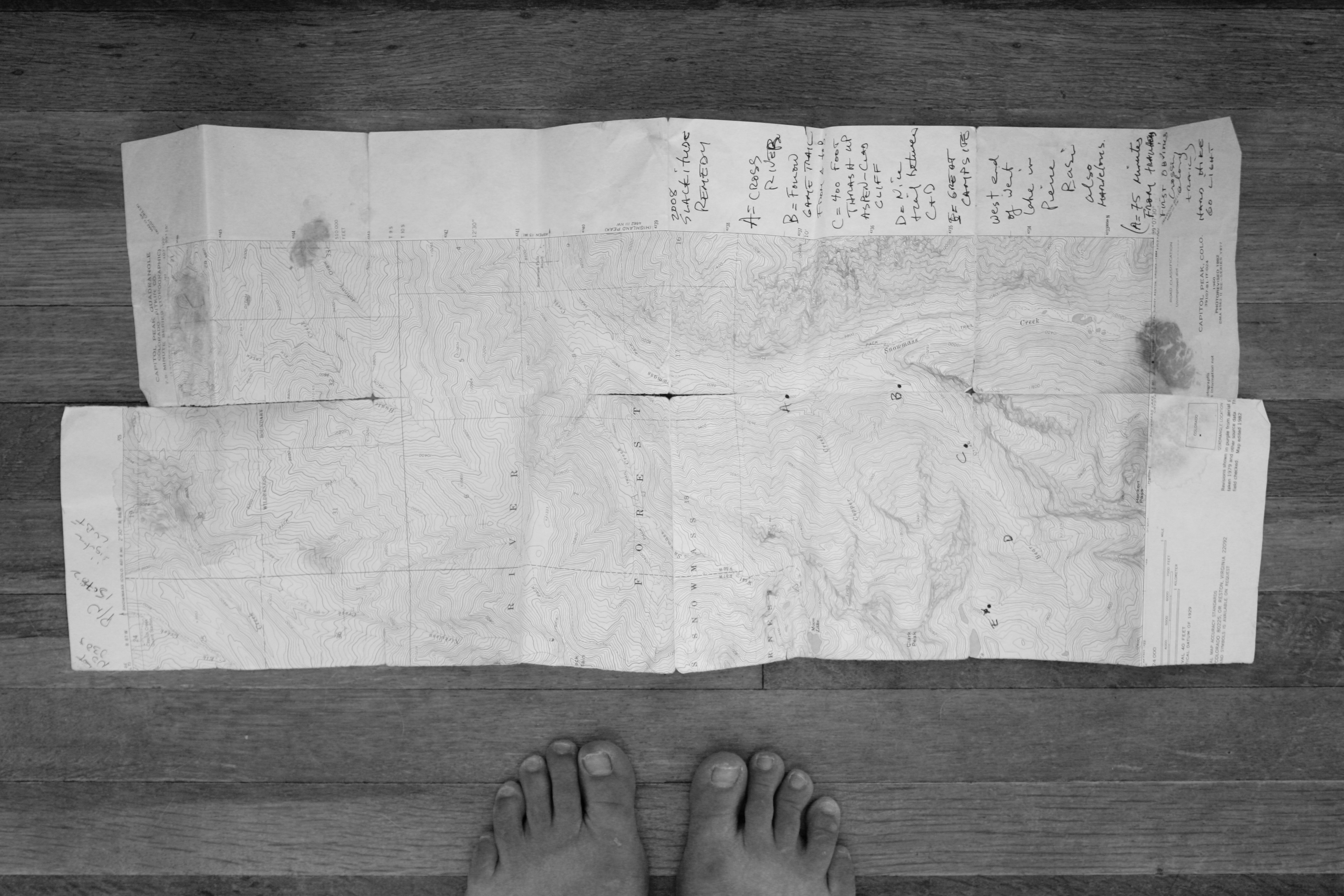 I keep a wooden box on my bedside table.
I keep a wooden box on my bedside table.
It’s cheap – an old Yalumba Wine case that I found on a curb somewhere, with a hinged lid and a shred of price tag still attached. Usually, it’s stacked high with magazines half read, a thing seldom opened and often dusty. But in all of the houses where I’ve lived in two states, I’ve kept it within hands’ reach of where I sleep.
What it contains is difficult to describe.
Nominally, it’s a collection of maps. I found the first in 2007 at an Aspen, Colorado thrift store – a treasure of a place where you could pick up the castoffs of the rich with the scrapings from your pocket. Designer dresses crammed in the back of the 50-cent bin; $300 jackets for the price of a sandwich. Rifling through the shelves of the basement book room, my hands closed on a gallon ziplock so fat it couldn’t seal. Old topographical maps of the surrounding warren of peaks and redbanked creeks spilled from its mouth, along with several hand-drawn novelty maps of the same, and giant dog-eared Forest Service and Bureau of Land Management maps of deserts further west, all the way into Utah.
From then on, every map went into the box with this stack. I added the Adirondacks and the Boundary Waters. I added my own carefully folded routes from different Colorado valleys and ranges – a random scrap from a backpacking trip that passed by a steep waterfall and a beaver jaw, another from a summer of careful plant transects in alpine meadows that sparked with paintbrush and phlox. When I left Aspen for a valley across the mountains, a friend sent me half a quadrat in the mail as a goodbye. It was stained with blood, torn along the creases and marked with a terse set of instructions:
“A=Cross River
B=Follow Game Trail from A to B
C=400-Foot Thrash Up Aspen-Clad Cliff.”
Five years passed before I shouldered a pack and followed that alphabet to a series of lakes so blue they made me thirsty just to look at them. There are many places on the maps in my box where I still have not been. The going is not the point of the box. This is why what the box contains is not really maps at all.
A map of a wild place never traveled is, foremost, pure and intoxicating potential. And a growing stack of wild maps is an expanding horizon of possibilities. Its presence is like a 360-degree view. The canyons you know are tucked behind those bluffs but can’t see, don’t know, could never know entirely, certainly not from a map, or even with repeated forays up every slot and slope. The rivulets that may be tucked in those canyons, the way they dry in summer or flush with rain in monsoon. The oceans of slickrock and sand, grass and sage, or salt water far beyond. And for me, always the mountains, rolling back from each other in crest and trough, surfacing and sinking secrets.
In a life so frequently hemmed by walls, it seems important to be able to carry space in your hands. To reach from a half-waking dream, brush it with your fingers, and remember for a moment that the world will always be too big to contain.
Photo of curious half-map by the author, who intends to visit as many of the places in the map box as she can muster, even if that’s not *technically* the point of the map box.
Maps are invitations to dreams, in the past, present and future, complete with directions on how to get there, either in your mind, or in your body. Ah yes, I remember Pierre Basin: afternoon delight, 1982. Barefooted. Maps tell the truth.
This piece is beautiful. I think I may need to start a map box of my own.